1、Perugino CA, Stone JH. IgG4-related disease: an update on
pathophysiology and implications for clinical care[J]. Nat Rev
Rheumatol, 2020, 16(12): 702-714. DOI: 10.1038/s41584-020-0500-
7. Perugino CA, Stone JH. IgG4-related disease: an update on
pathophysiology and implications for clinical care[J]. Nat Rev
Rheumatol, 2020, 16(12): 702-714. DOI: 10.1038/s41584-020-0500-
7.
2、Bledsoe%20JR%2C%20Della-Torre%20E%2C%20Rovati%20L%2C%20et%20al.%20IgG4-related%20disease%3A%20review%20%0Aof%20the%20histopathologic%20features%2C%20di%EF%AC%80erential%20diagnosis%2C%20and%20therapeutic%20%0Aapproach%5BJ%5D.%20APMIS%2C%202018%2C%20126(6)%3A%20459-476.%20DOI%3A%2010.1111%2F%0Aapm.12845.%20Bledsoe%20JR%2C%20Della-Torre%20E%2C%20Rovati%20L%2C%20et%20al.%20IgG4-related%20disease%3A%20review%20%0Aof%20the%20histopathologic%20features%2C%20di%EF%AC%80erential%20diagnosis%2C%20and%20therapeutic%20%0Aapproach%5BJ%5D.%20APMIS%2C%202018%2C%20126(6)%3A%20459-476.%20DOI%3A%2010.1111%2F%0Aapm.12845.%20
3、Carruthers MN, Khosroshahi A, Augustin T, et al. TTe diagnostic utility
of serum IgG4 concentrations in IgG4-related disease[J]. Ann Rheum
Dis, 2015, 74(1): 14-18. DOI: 10.1136/annrheumdis-2013-204907. Carruthers MN, Khosroshahi A, Augustin T, et al. TTe diagnostic utility
of serum IgG4 concentrations in IgG4-related disease[J]. Ann Rheum
Dis, 2015, 74(1): 14-18. DOI: 10.1136/annrheumdis-2013-204907.
4、Goto H, Ueda SI, Nemoto R, et al. Clinical features and symptoms
of IgG4-related ophthalmic disease: a multicenter study[J]. Jpn J
Ophthalmol, 2021, 65(5): 651-656. DOI: 10.1007/s10384-021-
00847-3.Goto H, Ueda SI, Nemoto R, et al. Clinical features and symptoms
of IgG4-related ophthalmic disease: a multicenter study[J]. Jpn J
Ophthalmol, 2021, 65(5): 651-656. DOI: 10.1007/s10384-021-
00847-3.
5、An SY, Sun BJ. Semiquantitative 18F-FDG PET/CT in monitoring
glucocorticoid response of immunoglobulin G4-related effusive
constrictive pericarditis: a case report[J]. BMC Cardiovasc Disord,
2024, 24(1): 122. DOI: 10.1186/s12872-024-03797-z. An SY, Sun BJ. Semiquantitative 18F-FDG PET/CT in monitoring
glucocorticoid response of immunoglobulin G4-related effusive
constrictive pericarditis: a case report[J]. BMC Cardiovasc Disord,
2024, 24(1): 122. DOI: 10.1186/s12872-024-03797-z.
6、Wang S, Xu X, Bai Z, et al. IgG4-related disease with multiple organs
involvement was effectively controlled by glucocorticoids: a case
report[J]. AME Case Rep, 2020, 4: 22. DOI: 10.21037/acr-20-43. Wang S, Xu X, Bai Z, et al. IgG4-related disease with multiple organs
involvement was effectively controlled by glucocorticoids: a case
report[J]. AME Case Rep, 2020, 4: 22. DOI: 10.21037/acr-20-43.
7、Cortazar FB, Stone JH. IgG4-related disease and the kidney[J]. Nat
Rev Nephrol, 2015, 11(10): 599-609. DOI: 10.1038/nrneph.2015.95. Cortazar FB, Stone JH. IgG4-related disease and the kidney[J]. Nat
Rev Nephrol, 2015, 11(10): 599-609. DOI: 10.1038/nrneph.2015.95.
8、Liu J, Liu Y, Shen X, et al. Clinicopathological characteristics of IgG4-
related lung disease[J]. BMC Pulm Med, 2021, 21(1): 413. DOI:
10.1186/s12890-021-01781-3. Liu J, Liu Y, Shen X, et al. Clinicopathological characteristics of IgG4-
related lung disease[J]. BMC Pulm Med, 2021, 21(1): 413. DOI:
10.1186/s12890-021-01781-3.
9、Tanaka A, Tazuma S, Okazaki K, et al. Clinical features, response to
treatment, and outcomes ofIgG4-related sclerosing cholangitis[J].
Clin Gastroenterol Hepatol, 2017, 15(6): 920-926.e3. DOI: 10.1016/
j.cgh.2016.12.038.
Tanaka A, Tazuma S, Okazaki K, et al. Clinical features, response to
treatment, and outcomes ofIgG4-related sclerosing cholangitis[J].
Clin Gastroenterol Hepatol, 2017, 15(6): 920-926.e3. DOI: 10.1016/
j.cgh.2016.12.038.
10、Tsai MK, Chen YL, Chen HC, et al. IgG4-related tubulointerstitial
nephritis[J]. Ann Rheum Dis, 2024, 83(4): 537-538. DOI: 10.1136/
ard-2023-224899. Tsai MK, Chen YL, Chen HC, et al. IgG4-related tubulointerstitial
nephritis[J]. Ann Rheum Dis, 2024, 83(4): 537-538. DOI: 10.1136/
ard-2023-224899.
11、Goto H, Takahira M, et al. Diagnostic criteria for IgG4-related
ophthalmic disease[J]. Jpn J Ophthalmol, 2015, 59(1): 352. DOI:
10.1007/s10384-014-0352-2.Goto H, Takahira M, et al. Diagnostic criteria for IgG4-related
ophthalmic disease[J]. Jpn J Ophthalmol, 2015, 59(1): 352. DOI:
10.1007/s10384-014-0352-2.
12、Dragan AD, Weller A, Lingam RK. Imaging of IgG4-related disease in
the extracranial head and neck[J]. Eur J Radiol, 2021, 136: 109560.
DOI: 10.1016/j.ejrad.2021.109560. Dragan AD, Weller A, Lingam RK. Imaging of IgG4-related disease in
the extracranial head and neck[J]. Eur J Radiol, 2021, 136: 109560.
DOI: 10.1016/j.ejrad.2021.109560.
13、Klingenstein A, Garip-Kuebler A, Priglinger S, et al. Morphologic crosssectional
imaging features of IgG4-related orbitopathy in comparison to
ocular adnexal lymphoma[J]. Clin Ophthalmol, 2021, 15: 1119-1127.
DOI: 10.2147/OPTH.S299655. Klingenstein A, Garip-Kuebler A, Priglinger S, et al. Morphologic crosssectional
imaging features of IgG4-related orbitopathy in comparison to
ocular adnexal lymphoma[J]. Clin Ophthalmol, 2021, 15: 1119-1127.
DOI: 10.2147/OPTH.S299655.
14、Behzadi F, Suh CH, Jo VY, et al. Imaging of IgG4-related disease in the
head and neck: a systematic review, case series, and pathophysiology
update[J]. J Neuroradiol, 2021, 48(5): 369-378. DOI: 10.1016/
j.neurad.2021.01.006.Behzadi F, Suh CH, Jo VY, et al. Imaging of IgG4-related disease in the
head and neck: a systematic review, case series, and pathophysiology
update[J]. J Neuroradiol, 2021, 48(5): 369-378. DOI: 10.1016/
j.neurad.2021.01.006.
15、Zhang W, Dong LL, Zhu J, et al. Chinese expert consensus on the
diagnosis and treatment of IgG4 related diseases[J]. Zhonghua Nei
Ke Za Zhi, 2021, 60(3):192-206. DOI: 10.3760/cma.j.cn112138-
20200803-00726.Zhang W, Dong LL, Zhu J, et al. Chinese expert consensus on the
diagnosis and treatment of IgG4 related diseases[J]. Zhonghua Nei
Ke Za Zhi, 2021, 60(3):192-206. DOI: 10.3760/cma.j.cn112138-
20200803-00726.
16、Xu WL, Ling YC, Wang ZK, et al. Diagnostic performance of serum
IgG4 level for IgG4-related disease: a meta-analysis[J]. Sci Rep, 2016, 6:
32035. DOI: 10.1038/srep32035. Xu WL, Ling YC, Wang ZK, et al. Diagnostic performance of serum
IgG4 level for IgG4-related disease: a meta-analysis[J]. Sci Rep, 2016, 6:
32035. DOI: 10.1038/srep32035.
17、Mohapatra S, Charilaou P, Sharma A, et al. Signiffcance of peripheral
eosinophilia for diagnosis of IgG4-related disease in subjects with
elevated serum IgG4 levels[J]. Pancreatology, 2020, 20(1): 74-78.
DOI: 10.1016/j.pan.2019.11.016. Mohapatra S, Charilaou P, Sharma A, et al. Signiffcance of peripheral
eosinophilia for diagnosis of IgG4-related disease in subjects with
elevated serum IgG4 levels[J]. Pancreatology, 2020, 20(1): 74-78.
DOI: 10.1016/j.pan.2019.11.016.
18、Yu KH, Chan TM, Tsai PH, et al. Diagnostic performance of serum
IgG4 levels in patients with IgG4-related disease[J]. Medicine, 2015,
94(41): e1707. DOI: 10.1097/MD.0000000000001707. Yu KH, Chan TM, Tsai PH, et al. Diagnostic performance of serum
IgG4 levels in patients with IgG4-related disease[J]. Medicine, 2015,
94(41): e1707. DOI: 10.1097/MD.0000000000001707.
19、Wang W, Li Y, Feng H. TTe signiffcance of serum IgG4/IgG and IgG4/
IgG1 ratio in the diagnosis value of IgG4-related diseases[J]. Discov
Med, 2023, 35(177): 476. DOI: 10.24976/discov.med.202335177.48. Wang W, Li Y, Feng H. TTe signiffcance of serum IgG4/IgG and IgG4/
IgG1 ratio in the diagnosis value of IgG4-related diseases[J]. Discov
Med, 2023, 35(177): 476. DOI: 10.24976/discov.med.202335177.48.
20、Zhang X, Wu G, Wang M, et al. Novel advances in the study of IgG4-
related disease in the eye and ocular adnexa[J]. Ophthalmic Res, 2022,
65(6): 605-614. DOI: 10.1159/000525955.
Zhang X, Wu G, Wang M, et al. Novel advances in the study of IgG4-
related disease in the eye and ocular adnexa[J]. Ophthalmic Res, 2022,
65(6): 605-614. DOI: 10.1159/000525955.
21、Takano K, Yajima R, Seki N, et al. A study of infraorbital nerve
swelling associated with immunoglobulin G4 Mikulicz's disease[J].
Mod Rheumatol, 2014, 24(5): 798-801. DOI: 10.3109/14397595.
2013.865884.Takano K, Yajima R, Seki N, et al. A study of infraorbital nerve
swelling associated with immunoglobulin G4 Mikulicz's disease[J].
Mod Rheumatol, 2014, 24(5): 798-801. DOI: 10.3109/14397595.
2013.865884.
22、Gan L, Luo X, Fei Y, et al. Ophthalmic involvement disparities in
clinical characteristics of IgG4-related disease: a retrospective study of 573 patients[J]. BMC Ophthalmol, 2021, 21(1): 447. DOI: 10.1186/
s12886-021-02210-z. Gan L, Luo X, Fei Y, et al. Ophthalmic involvement disparities in
clinical characteristics of IgG4-related disease: a retrospective study of 573 patients[J]. BMC Ophthalmol, 2021, 21(1): 447. DOI: 10.1186/
s12886-021-02210-z.
23、Detiger SE, Karim AF, Verdijk RM, et al. The treatment outcomes in
IgG4-related orbital disease: a systematic review of the literature[J].
Acta Ophthalmol, 2019, 97(5): 451-459. DOI: 10.1111/aos.14048.
Detiger SE, Karim AF, Verdijk RM, et al. The treatment outcomes in
IgG4-related orbital disease: a systematic review of the literature[J].
Acta Ophthalmol, 2019, 97(5): 451-459. DOI: 10.1111/aos.14048.
24、Yu WK, Tsai CC, Kao SC, et al. Immunoglobulin G4-related
ophthalmic disease[J]. Taiwan J Ophthalmol, 2018, 8(1): 9. DOI:
10.4103/tjo.tjo_12_17.
Yu WK, Tsai CC, Kao SC, et al. Immunoglobulin G4-related
ophthalmic disease[J]. Taiwan J Ophthalmol, 2018, 8(1): 9. DOI:
10.4103/tjo.tjo_12_17.
25、L%C3%B6hr%20JM%2C%20Vujasinovic%20M%2C%20Rosendahl%20J%2C%20et%20al.%20IgG4-related%20diseases%20of%20the%20%0Adigestive%20tract%5BJ%5D.%20Nat%20Rev%20Gastroenterol%20Hepatol%2C%202022%2C%2019(3)%3A%20185-%0A197.%20DOI%3A%2010.1038%2Fs41575-021-00529-y.%20%0AL%C3%B6hr%20JM%2C%20Vujasinovic%20M%2C%20Rosendahl%20J%2C%20et%20al.%20IgG4-related%20diseases%20of%20the%20%0Adigestive%20tract%5BJ%5D.%20Nat%20Rev%20Gastroenterol%20Hepatol%2C%202022%2C%2019(3)%3A%20185-%0A197.%20DOI%3A%2010.1038%2Fs41575-021-00529-y.%20%0A
26、Yang X, Zhou H, Wang W, et al. Recent advances in IgG4-related
autoimmune pancreatitis[J]. Pathol Res Pract, 2024, 257: 155331.
DOI: 10.1016/j.prp.2024.155331. Yang X, Zhou H, Wang W, et al. Recent advances in IgG4-related
autoimmune pancreatitis[J]. Pathol Res Pract, 2024, 257: 155331.
DOI: 10.1016/j.prp.2024.155331.
27、Uchida K, Okazaki K. Current status of type 1 (IgG4-related)
autoimmune pancreatitis[J]. J Gastroenterol, 2022, 57(10): 695-708.
DOI: 10.1007/s00535-022-01891-7. Uchida K, Okazaki K. Current status of type 1 (IgG4-related)
autoimmune pancreatitis[J]. J Gastroenterol, 2022, 57(10): 695-708.
DOI: 10.1007/s00535-022-01891-7.
28、JayachamarajapuraOnkaramurthy N, Suresh SC, TheethaKariyanna
P, et al. IgG4 related disease and aortitis: an up-to-date review[J].
Scand J Rheumatol, 2023, 52(3): 306-316. DOI: 10.1080/03009742.
2022.2145744. JayachamarajapuraOnkaramurthy N, Suresh SC, TheethaKariyanna
P, et al. IgG4 related disease and aortitis: an up-to-date review[J].
Scand J Rheumatol, 2023, 52(3): 306-316. DOI: 10.1080/03009742.
2022.2145744.
29、Zheng X, Zou W, Zou S, et al. IgG4-related Lung Disease: A Case
Report and Review of the Literature[J]. Altern TTer Health Med, 2023,
29(8):320-323.
Zheng X, Zou W, Zou S, et al. IgG4-related Lung Disease: A Case
Report and Review of the Literature[J]. Altern TTer Health Med, 2023,
29(8):320-323.
30、Kukulska%20M%2C%20Smo%C5%82a%20I%2C%20Ha%C5%82o%C5%84%20A%2C%20et%20al.%20Autoimmune%20hepatitis%20and%20IgG4-%0Arelated%20disease%3A%20a%20diagnostic%20challenge%5BJ%5D.%20Pol%20Arch%20Intern%20Med%2C%202020%2C%20%0A130(7-8)%3A%20695-696.%20DOI%3A%2010.20452%2Fpamw.15350.%20Kukulska%20M%2C%20Smo%C5%82a%20I%2C%20Ha%C5%82o%C5%84%20A%2C%20et%20al.%20Autoimmune%20hepatitis%20and%20IgG4-%0Arelated%20disease%3A%20a%20diagnostic%20challenge%5BJ%5D.%20Pol%20Arch%20Intern%20Med%2C%202020%2C%20%0A130(7-8)%3A%20695-696.%20DOI%3A%2010.20452%2Fpamw.15350.%20
31、Capurso G, Pedica F, Palumbo D, et al. IgG4-related autoimmune
liver disease[J]. Minerva Gastroenterol, 2023, 69(1): 23-49. DOI:
10.23736/s2724-5895.20.02794-4. Capurso G, Pedica F, Palumbo D, et al. IgG4-related autoimmune
liver disease[J]. Minerva Gastroenterol, 2023, 69(1): 23-49. DOI:
10.23736/s2724-5895.20.02794-4.
32、Della-Torre E, Lanzillotta M, Doglioni C. Immunology of IgG4-related
disease[J]. Clin Exp Immunol, 2015, 181(2): 191-206. DOI: 10.1111/
cei.12641.
Della-Torre E, Lanzillotta M, Doglioni C. Immunology of IgG4-related
disease[J]. Clin Exp Immunol, 2015, 181(2): 191-206. DOI: 10.1111/
cei.12641.
33、Rebours V, Lévy P. Pancreatic and biliary tract involvement in IgG4-related disease[J]. Presse Med, 2020, 49(1):104015. DOI: 10.1016/
j.lpm.2020.104015.Rebours V, Lévy P. Pancreatic and biliary tract involvement in IgG4-related disease[J]. Presse Med, 2020, 49(1):104015. DOI: 10.1016/
j.lpm.2020.104015.
34、Dalekos, G , Gatselis , et al. Variant and speciffc forms of autoimmune
cholestatic liver diseases.[J]. Arch Immunol TTer Exp (Warsz), 2019,
67(4): 197-211.DOI:10.1007/s00005-019-00550-9.Dalekos, G , Gatselis , et al. Variant and speciffc forms of autoimmune
cholestatic liver diseases.[J]. Arch Immunol TTer Exp (Warsz), 2019,
67(4): 197-211.DOI:10.1007/s00005-019-00550-9.
35、Nakazawa, T, S. Shimizu, I. Naitoh,et al. IgG4-related sclerosing
cholangitis [J]. Semin Liver Dis, 2016,36(3):216-228. DOI:10.1055/
s-0036-1584321.Nakazawa, T, S. Shimizu, I. Naitoh,et al. IgG4-related sclerosing
cholangitis [J]. Semin Liver Dis, 2016,36(3):216-228. DOI:10.1055/
s-0036-1584321.
36、Peyronel F, Vaglio A. IgG4-related kidney disease[J]. Clin J Am
Soc Nephrol, 2023, 18(8):994-996. DOI: 10.2215/CJN.0000
000000000235.Peyronel F, Vaglio A. IgG4-related kidney disease[J]. Clin J Am
Soc Nephrol, 2023, 18(8):994-996. DOI: 10.2215/CJN.0000
000000000235.
37、Cornell LD. IgG4-related tubulointerstitial nephritis[J]. Kidney Int,
2010, 78(10): 951-953. DOI: 10.1038/ki.2010.342. Cornell LD. IgG4-related tubulointerstitial nephritis[J]. Kidney Int,
2010, 78(10): 951-953. DOI: 10.1038/ki.2010.342.
38、Kawano M, Saeki T, Ubara Y, et al. Recent advances in IgG4-related
kidney disease[J]. Mod Rheumatol, 2023, 33(2): 242-251. DOI:
10.1093/mr/roac065. Kawano M, Saeki T, Ubara Y, et al. Recent advances in IgG4-related
kidney disease[J]. Mod Rheumatol, 2023, 33(2): 242-251. DOI:
10.1093/mr/roac065.
39、Ling J, Wang H, Pan W, et al. Clinical and imaging features of IgG4-
related kidney disease[J]. AbdomRadiol (NY), 2020, 45(6): 1915-
1921. DOI: 10.1007/s00261-020-02477-8. Ling J, Wang H, Pan W, et al. Clinical and imaging features of IgG4-
related kidney disease[J]. AbdomRadiol (NY), 2020, 45(6): 1915-
1921. DOI: 10.1007/s00261-020-02477-8.
40、Pillai S, Perugino C, Kaneko N. Immune mechanisms of fibrosis and
inffammation in IgG4-related disease[J]. Curr Opin Rheumatol, 2020,
32(2): 146-151. DOI: 10.1097/bor.0000000000000686. Pillai S, Perugino C, Kaneko N. Immune mechanisms of fibrosis and
inffammation in IgG4-related disease[J]. Curr Opin Rheumatol, 2020,
32(2): 146-151. DOI: 10.1097/bor.0000000000000686.
41、Mbengue M, Goumri N, Niang A. IgG4-related kidney disease:
Pathogenesis, diagnosis, and treatment[J]. Clin Nephrol, 2021, 95(6):
292-302. DOI: 10.5414/cn110492. Mbengue M, Goumri N, Niang A. IgG4-related kidney disease:
Pathogenesis, diagnosis, and treatment[J]. Clin Nephrol, 2021, 95(6):
292-302. DOI: 10.5414/cn110492.
42、Sogabe Y, Ohshima KI, Azumi A, et al. Location and frequency of
lesions in patients with IgG4-related ophthalmic diseases[J]. Graefe's
Arch Clin Exp Ophthalmol, 2014, 252(3): 531-538. DOI: 10.1007/
s00417-013-2548-4. Sogabe Y, Ohshima KI, Azumi A, et al. Location and frequency of
lesions in patients with IgG4-related ophthalmic diseases[J]. Graefe's
Arch Clin Exp Ophthalmol, 2014, 252(3): 531-538. DOI: 10.1007/
s00417-013-2548-4.
43、Maritati F, Peyronel F, Vaglio A. IgG4-related disease: a clinical
perspective[J]. Rheumatology, 2020, 59(Suppl 3): iii123-iii131. DOI:
10.1093/rheumatology/kez667. Maritati F, Peyronel F, Vaglio A. IgG4-related disease: a clinical
perspective[J]. Rheumatology, 2020, 59(Suppl 3): iii123-iii131. DOI:
10.1093/rheumatology/kez667.







